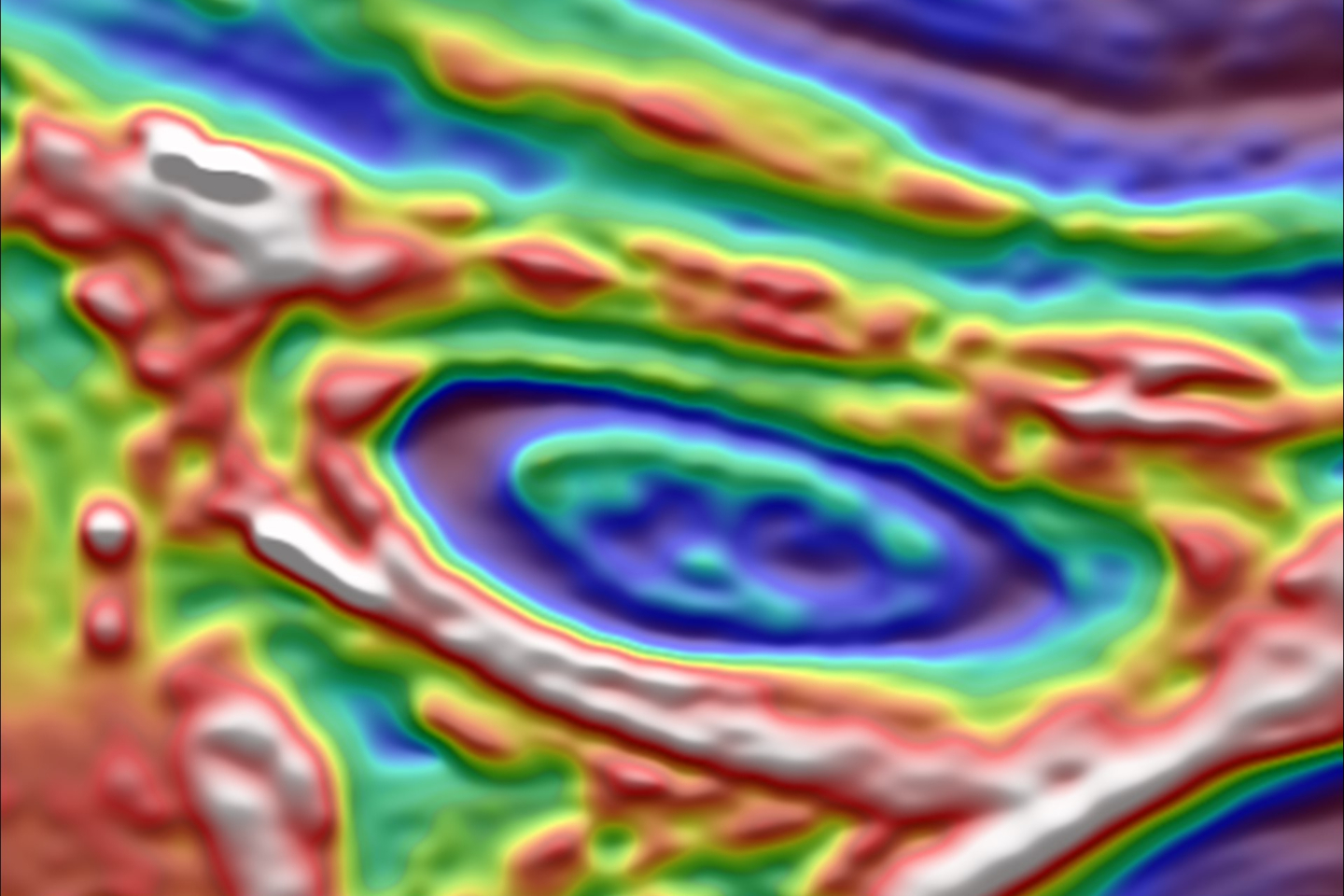Terrain Minerals’ geophysics have identified five conductors at its Lort River project near Esperance in Western Australia that show the potential for sulphide mineralisation analogous to IGO’s renowned Nova-Bollinger deposits in the same mineral belt. Two of the conductors lie on the western periphery of a prominent “eye-shaped” aeromagnetic imagery feature that may also signify a mineralised mafic intrusive.


Terrain Minerals’ geophysics have identified five conductors at its Lort River project near Esperance in Western Australia that show the potential for sulphide mineralisation analogous to IGO’s renowned Nova-Bollinger deposits in the same mineral belt.
The company says two of the newly-unveiled conductors lie on the western periphery of a prominent “eye-shaped” aeromagnetic imagery feature similar to that which led to the 2012 Nova discovery by Sirius Resources before it was taken over by IGO. The feature may also signify a mineralised mafic intrusive.
The other three conductors lie on the eastern periphery of more distal “rim” zones to the eye signature – and presumed mafic intrusive - and while slightly smaller in size, they still look like they warrant closer investigation. Curiously, the two most eastward, smaller anomalies appear to lie on a much bigger lensoid element of geological architecture and are screaming out for further evaluation.
Terrain recently appointed leading Perth-based geophysicists, Southern Geoscience Consultants (SGC), to process the company’s versatile time domain (VTEM-max) data produced from 1281km of lines recently flown in search of indications of massive sulphide bodies. SGC confirmed the prominent eye signature is probably a mafic intrusive that was likely to have been emplaced during the major ancient tectonic event known as the Albany-Fraser Orogen (AFO).
Significantly, the consultants further offered that such an interpretation could support IGO’s view that the magmatic processes that gave rise to its Nova-style of massive sulphide nickel mineralisation could have occurred in multiple locations along the tectonic belt.
The Lort River project and Nova-Bollinger operations both lie within the prospective Albany-Fraser Belt – a major arcuate tectonic belt that extends from WA’s south-western coast at Albany and through Esperance before trending north-eastwards inland for a total distance of more than 1200km.
But of key importance is that recent studies show the Archaean Yilgarn craton has played a fundamental role in the evolution of the AFO, a conclusion which goes against the long-held idea that it is a simple collision zone.
The first clue to support this alternative view is that there is no internal suture to support the collision idea. Instead, the geological framework of the AFO is a long history of extensional tectonics including marginal basins, deep crustal magmatism and thrust tectonics, giving rise to long-lived structures.
Distinct mineralising events are noted throughout the history of the belt, with the Nova nickel-copper-cobalt deposit hosted by mafic intrusions dated at about 1.3 billion years old, in a prime example of magmatic sulphide melts being emplaced into the deep crust.
Terrain Minerals executive director Justin Virgin said: “The hunt for the next Nova-style magmatic nickel-copper deposit in the Albany-Fraser Belt is intensifying and we believe we are at the forefront of this search. IGO’s success with Nova has shown that these highly-valuable ore bodies are not isolated occurrences but part of a broader, richly-mineralised region.”
The company points to IGO’s investment of $1.8 billion in Nova, at a time when nickel prices were significantly lower, as highlighting the immense potential of this type of deposit. IGO’s fourth-quarter financial numbers for the year show that its Nova ore bodies are still profitable, even at today’s nickel price.
Terrain’s 100 per cent-owned Lort River nickel exploration project extends more than 640 square kilometres of prospective exploration acreage centred about 50km north-west of the southern port city of Esperance and is about 300km south-west of the Nova-Bollinger project. The belt is not only home to Nova-Bollinger, but also AngloGold Ashanti-Regis Resources’ giant Tropicana venture and its 1.57 million-ounce gold mineral reserve about 650km north-east of Terrain’s ground.
Terrain’s recent airborne geophysical survey has revealed compelling evidence that the southern half of the Albany-Fraser Belt could be just as promising as the northern region where Nova was discovered. Management says the presence of late-time bedrock conductors within the Nova-lookalike eye feature at Lort River strongly supports its belief that it is geologically well-positioned to make a new discovery.
The company is planning to follow up its airborne VTEM survey results with a ground-based electromagnetic (EM) survey and also proposes undertaking a supportive soil geochemical sampling program across the conductors to determine their prospectivity for potentially economic massive nickel-copper sulphide mineralisation. It expects to kick off reconnaissance drilling in the final quarter of the year.
If Terrain can pull a new orebody out of the hat at Lort River then it really will be worth a bottle of Bollinger – or a few – and the new story will also go a long way towards proving the revision of the Albany-Fraser structural history model.
If that all comes together, then it will on for young and old in WA’s south-west corner and new explorers to the region will need to book their Esperance accommodation much earlier than they might have expected … or bring a tent.
Is your ASX-listed company doing something interesting? Contact: matt.birney@businessnews.com.au














